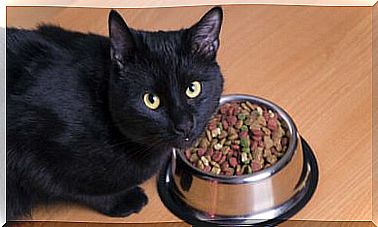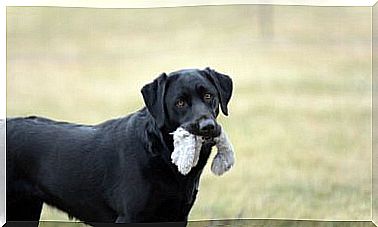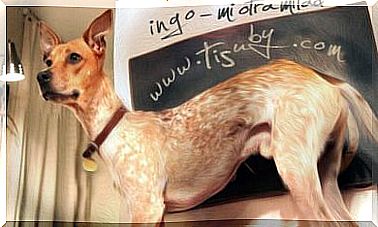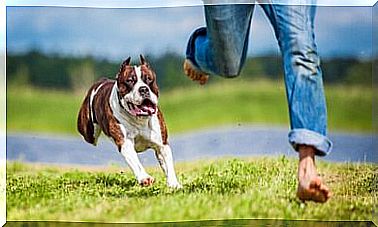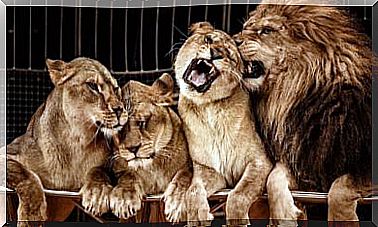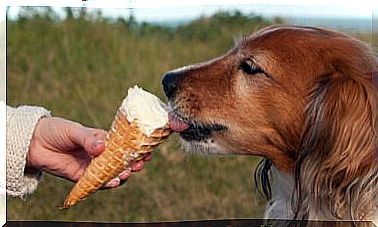Why Shouldn’t There Be Animals In Your Kitchen?

Beyond how unpleasant it can be to find hair in food, pets can be pollutants. Hence, that is the main reason why there should not be animals in your kitchen.
The most common thing in any home is to locate the dog’s food and water bowl in the kitchen. However, it will be necessary to consider placing it elsewhere. Not only because a source of contamination can be generated, but because the animal’s food can also be affected.
Animals, like owners, can be victims of foodborne infections. And this trend increases when unprocessed food is delivered directly into the animal’s mouth. Poor handling or storage problems are also the main reasons for food poisoning.
Reasons why you shouldn’t have animals in your kitchen
Animals can be physical and microbiological pollutants through viruses or bacteria. Through their hairs or natural secretions, they can contaminate the areas where food is regularly placed. The consequences can range from a simple allergy to stomach disorders.
However, the real problems come from pet waste. The feces are carriers of parasites and bacteria. That is why it is important to prevent the animal from spreading any of its stools around the house. Even after coming for a walk, it is important to wash their paws or prevent them from entering the kitchen.
Diseases associated with contamination of food by animal handling can be bacterial or viral. In the first case, the symptoms are stomach pain, diarrhea and vomiting may need medical attention and treatment.
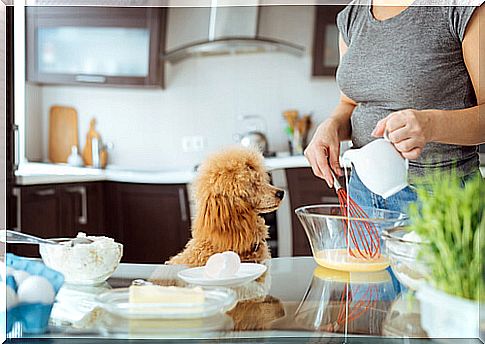
If it is a viral contagion, those annoying sensations can pass after three or four days. However, in both cases it is important to go for a medical visit.
It’s not just about the animal
When cooking, avoid contact with the animal and do not wash your hands afterwards. The act of petting the dog and continuing in the kitchen chores can open a direct channel to infection. Another bad habit to avoid is feeding the animal the ingredients that are being used, whether they are raw or cooked.
It is also important that the animals have their vaccines and deworming treatments up to date. This measure can help reduce the risks of contagion, especially through bacterial infections.
Finally, another factor to take into account is the feeding of the animals; the safest way to feed pets is by using processed food.
Prepared foods must have a good storage process to avoid spoilage. In case this is the owner’s choice, it is important not to leave food scraps on the animal’s plate.

Recommendations about animals and cooking
- A space of its own. Ideally, the pet has its own space to eat, different from the kitchen. In cases where the available space does not allow it, it is important to collect the plate once the animal has finished eating.
- Use different cleaning utensils. It is not advisable to use the same sponge or scourer to wash the dishes of the house and that of the pet. It is also not advisable to feed pets in the same dishes. The animal must have its own utensils.
- The kitchen is not a bathroom. If the pet needs to relieve itself inside the house, it must have space other than the kitchen. Animal droppings are highly polluting and transmitting diseases.
- Avoid getting on the kitchen table. This is usually a very common case in cats, who like to walk on the countertops in the kitchen. This gesture, which can be one of camaraderie, can turn into an infection through the hair of the animal. It is preferable to educate him that he should not go up to the kitchen furniture.
- Do not feed the animal with the leftovers. With this measure it is possible to foresee that the pet suffers some type of intoxication. One of the most important bacterial infections is salmonella.

